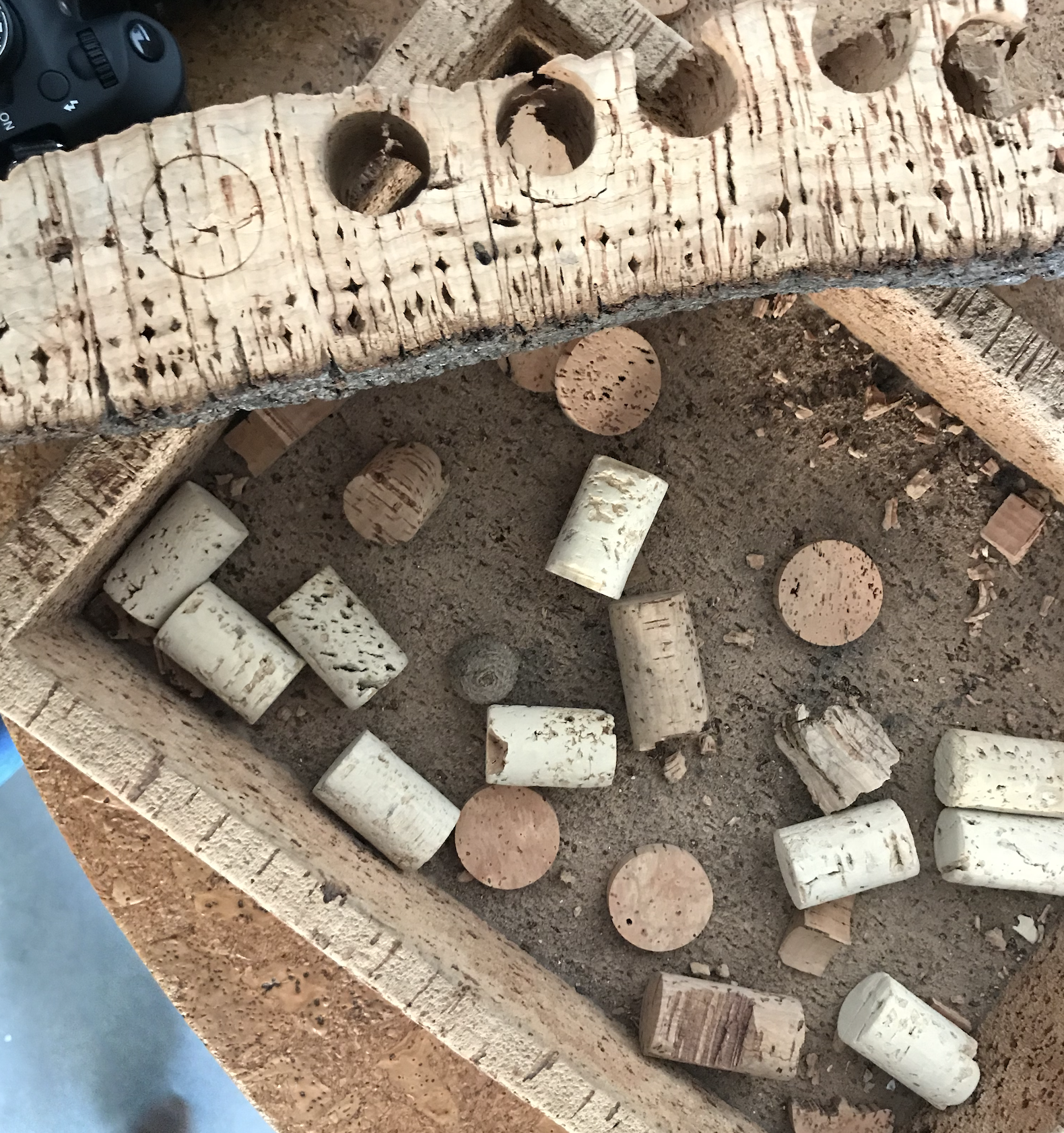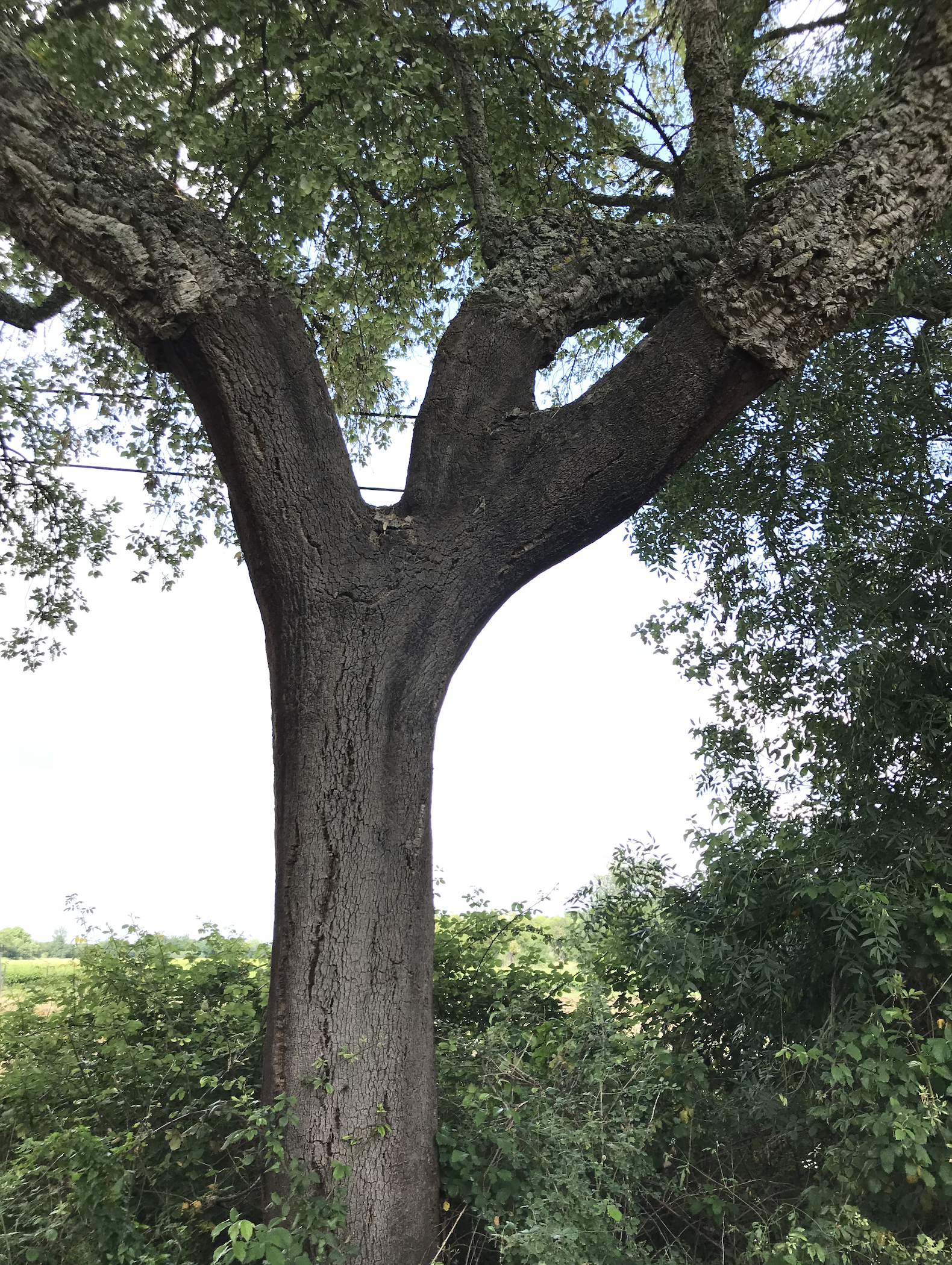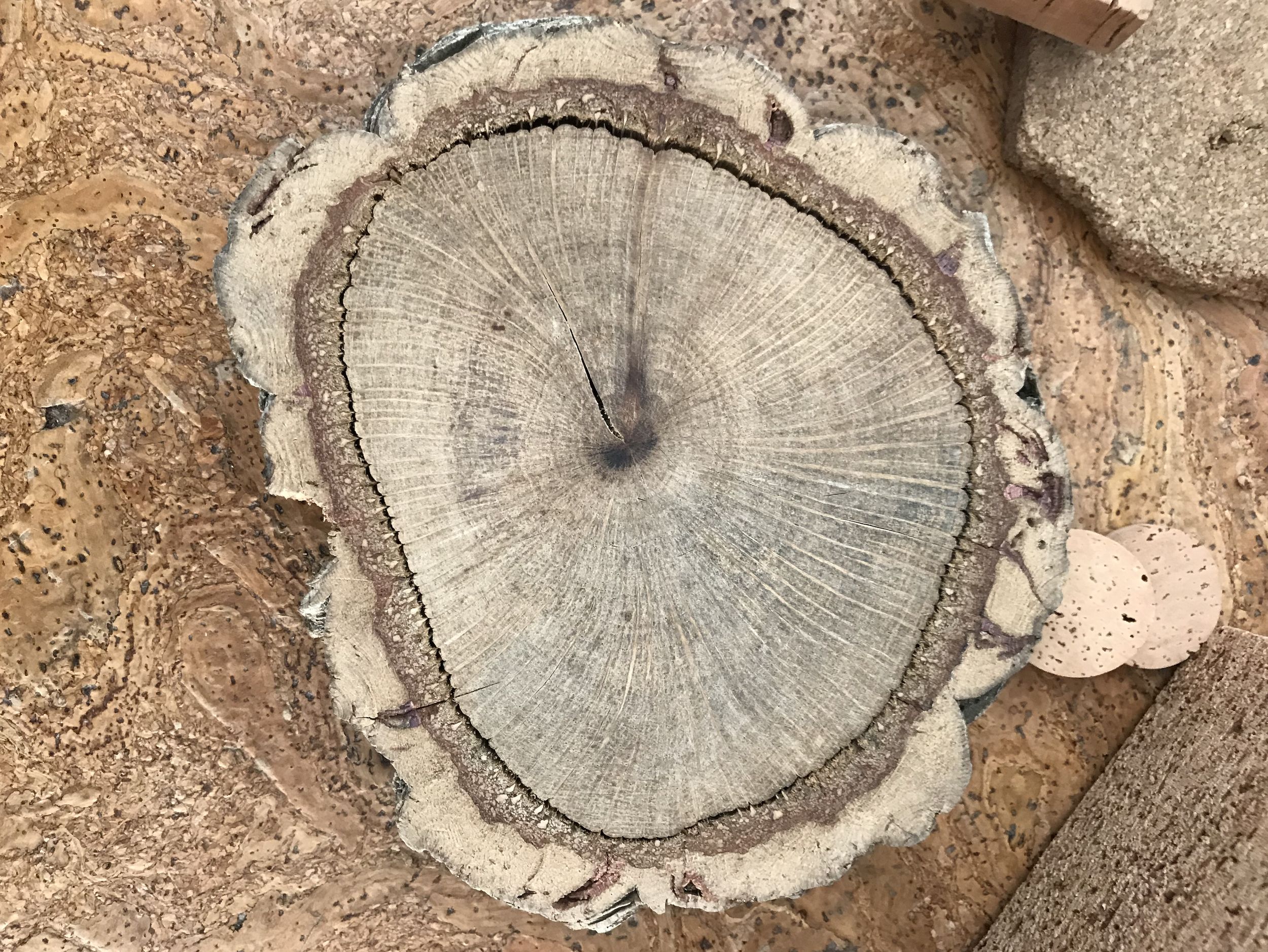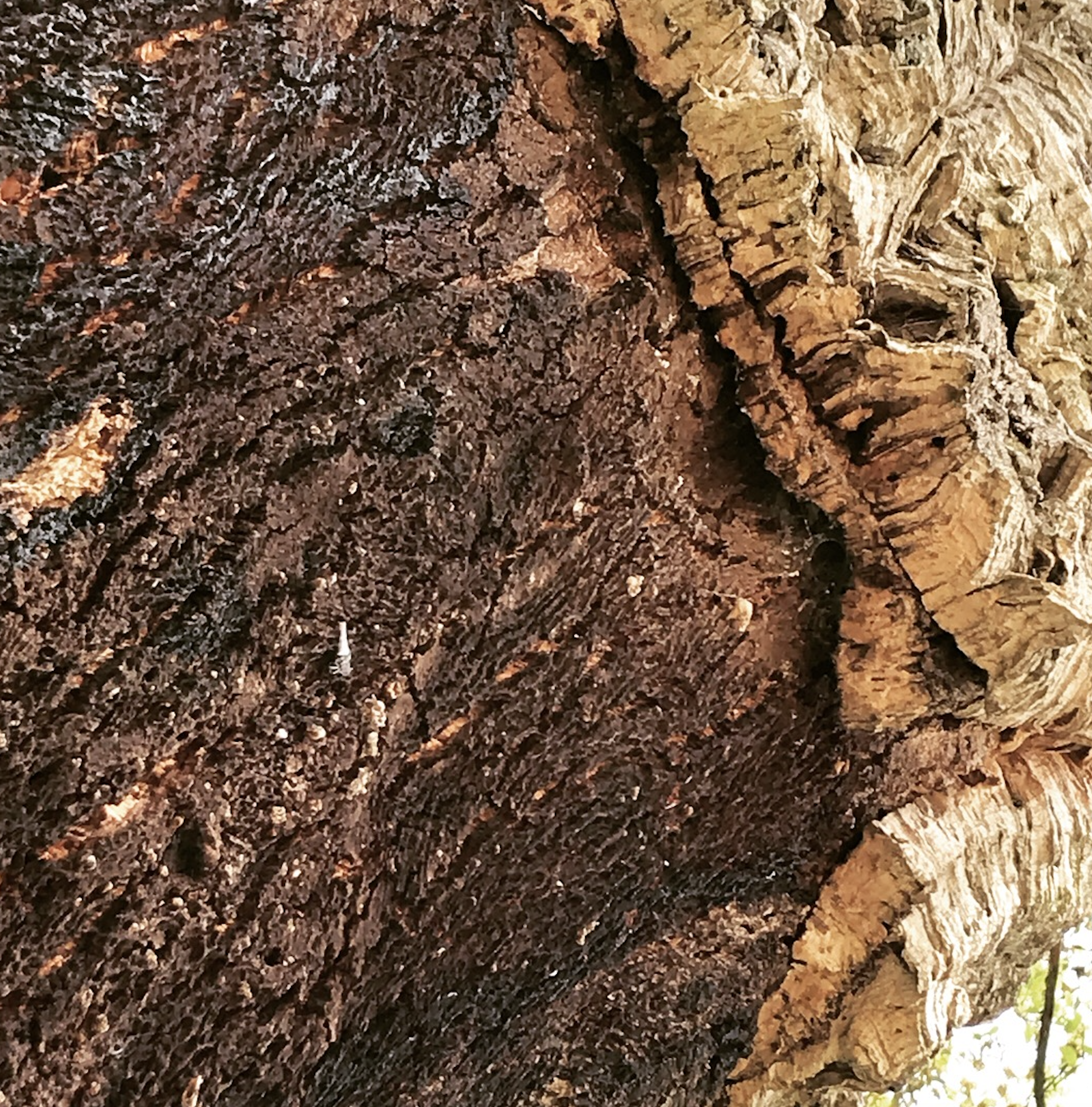The Cork in Your Hand: Ritual, Science, and Second Lives
There is a moment in the theater of wine service when a small object carries the weight of centuries.
A bottle is opened.
A cork is presented.
And suddenly, eyes drift toward you…what will you do with it?
For many guests in a restaurant, this moment feels ceremonial but confusing.
Do you smell it?
Do you touch it?
Do you simply nod and move on?
The truth is: the cork itself is both a practical tool and a symbolic gesture.
As a sommelier, I’ve watched countless people hesitate with this tiny cylinder of oak bark in hand, unsure of its purpose.
Let’s unravel the mystery.
Let’s talk about what the cork really is, what it reveals, why it sometimes betrays the wine it guards, and how, long after it has done its duty, it can live a second life as art, furniture, or even compost.
This is the story of cork, from forest to table to whatever you choose to make of it.
The Ritual of the Cork
When a sommelier or server presents you with a cork, it is not a test.
It is not meant to intimidate you, nor to demand some arcane knowledge of sniffing tree bark.
Traditionally, the cork is offered for one main reason: authenticity.
In centuries past, before branded capsules and tamper-proof packaging, the cork was stamped with the name of the château or producer.
By presenting the cork, the guest could verify that the wine being served was genuine and not swapped for something cheaper.
It was also a way of showing transparency: the cork itself would reveal if it had dried, crumbled, or carried the telltale scent of cork taint.
Today, with laser-etched bottles and barcoded seals, the authenticity ritual is largely symbolic.
Still, there is meaning in the gesture.
When handed the cork, here’s what you might consider doing:
Look at it. Check if the producer’s name or logo is on the cork…it should match the label. Notice the condition: is it wet, dry, cracked, or moldy?
Touch it. A healthy cork should feel slightly springy, not brittle or powdery.
Smell it (maybe). This is optional, but if you choose to, sniff for moldy or damp cardboard aromas, this could mean cork taint. The aroma is typically so subtle on the cork itself only a person with a fantastic sense of smell will notice (or a sommelier!)
Pass it back. Once you’ve acknowledged it, simply set it down or return it. The real judgment will come from tasting the wine itself.
The cork is not the wine…it’s the gatekeeper.
And gatekeepers sometimes stumble.
What Cork Really Is
To understand why cork is both miraculous and fallible, you need to know what it is.
Cork comes from the bark of the cork oak tree (Quercus suber), which grows primarily in Portugal, Spain, parts of France, Italy, and North Africa.
Every nine to ten years, skilled harvesters strip the outer bark without harming the tree, leaving it to regenerate. See below the photo I took of a cork tree…the top of the tree has much thicker bark and the bottom half looks smooth and smaller. This tree had been harvested three times prior.
This cycle can repeat for centuries…some cork oaks live for 200 years or more.
The bark itself is made of suberin, a waxy, spongy material that is lightweight, buoyant, and nearly impermeable to liquids and gases.
These properties make cork the perfect guardian of wine.
It expands to seal the bottle, yet breathes just enough to allow tiny exchanges with the outside world.
That breath gives wine its slow evolution, its chance to age gracefully.
When you hold a cork in your hand, you are holding a piece of a tree that may have been growing before you were born, harvested by hands that carry a tradition older than most nations.
It is, in its own way, a living bridge between forest and table.
Cork Taint: When the Guardian Fails
But not every cork is a flawless guardian.
Sometimes, the very bark that was meant to shield the wine turns traitor.
What was once a bridge between forest and cellar becomes the saboteur of the bottle.
This betrayal has a name: cork taint.
At its heart lies a compound called TCA (2,4,6-trichloroanisole), born when natural fungi hidden in the cork meet chlorine-based chemicals…remnants of old pesticides or cleaning agents.
The reaction is subtle in science, but devastating in sensation.
The result is a ghost that haunts the wine, cloaking its brightness with the smell of damp basements, wet cardboard, or newspapers left out in the rain.
On the palate, the effect is even crueler.
The fruit collapses.
The vibrancy is stripped away.
What should be alive and singing tastes instead muted, hollow, and weary.
Thankfully, it is becoming more rare…sommeliers used to estimate one in every ten bottles were infected.
When it does strike, it feels like tragedy.
The wine isn’t unsafe, only joyless, its promise stolen by an invisible flaw in the cork.
And here’s the important part: if you ever meet a corked wine in a restaurant, you are not at fault.
You have every right to send it back.
A good sommelier won’t argue, won’t shame, won’t hesitate…they’ll simply nod, take the bottle away, and bring you another. Because wine, above all, is meant to be shared in pleasure, not endured in disappointment.
Alternatives to Natural Cork
The modern wine world has introduced challengers to cork’s long reign: sleek screw caps, tidy synthetics, elegant glass stoppers.
They come with promises: no taint, no crumbling edges, no fear of betrayal.
Screw caps, especially, are engineers’ delight: airtight, consistent, preserving freshness with almost clinical precision.
And yet…natural cork still holds the throne.
Why?
Because wine is not only chemistry, it is ceremony.
Because there is music in that gentle pop, a note of anticipation that no twist of metal can mimic.
Because pulling a cork is not just opening a bottle…it is opening a moment, a memory, a story.
Yes, screw caps are reliable.
Yes, synthetics are affordable.
Yes, glass stoppers gleam with modernity.
But natural cork carries romance.
It carries centuries of tradition in its grain, the whisper of oak forests in Portugal, and the hands of harvesters who treat trees like kin.
As a sommelier, I honor the alternatives, but I love the imperfections of cork.
It breathes like we do, flawed but alive.
And perhaps that is why we keep returning to it: because cork, like wine itself, is never about perfection.
It is about beauty that comes with vulnerability.
What To Do With Corks at Home
If you drink wine often, you’ll soon find yourself with a collection of corks. Tossing them into the trash feels wrong…asteful, almost disrespectful. Luckily, cork is endlessly reusable.
Here are ways to give corks a second life:
Craft Projects:
Cork boards (classic, functional, and personal).
Coasters and trivets for your kitchen.
Keychains, stamps, or drawer pulls.
Wine cork wreaths for holidays.
Picture frames lined with cork mosaics.
Household Helpers:
Place under wobbly table legs as shims.
Cut into slices for plant markers in your garden.
Use as fishing bobbers or drawer noise dampeners.
Gardening Uses:
Crushed corks can aerate soil or act as mulch.
Cork pieces can be used as lightweight drainage in pots.
Upcycling into Art:
Sculptures, mosaics, or collages.
Jewelry like earrings or pendants.
Decorative jars filled with corks as rustic home décor.
Recycling Programs:
Organizations like ReCORK collect used corks and turn them into shoes, flooring, yoga blocks, and insulation.
Many wine shops now have drop-off bins for cork recycling.
Each cork you save becomes part of a story larger than a single bottle…it becomes part of a circular economy.
Cork in Culture and Symbolism
Cork is more than a seal…it is a cultural thread, woven into identity and imagination.
In Portugal, where the cork oak grows thick and ancient, the forests are not just ecological sanctuaries but living monuments, protected with reverence and celebrated with pride.
To walk among them is to feel history breathing through bark, each harvest a ritual that ties people to land.
But cork doesn’t linger only in bottles.
It slips quietly into fashion…stitched into handbags, pressed into wallets, shaped into hats…offering itself as a softer, kinder cousin to leather.
It creeps into homes, lining walls with warmth, cushioning floors with resilience, whispering sustainability in every step.
And then there is the cork we carry in language.
We “pop corks” to announce joy.
We “cork up” emotions to keep ourselves contained.
We “uncork” ideas when inspiration bursts free.
Cork is a material, yes, but it is also metaphor, a symbol of celebration, of suppression, of release.
In this way, cork reminds us that it has always been more than bark.
It is story.
It is symbol.
It is a piece of nature that somehow found its way into our rituals, our speech, and our very ways of marking life.
The Sustainability of Cork Forests
Cork is never just a stopper…it is an entire forest economy breathing within your hand.
The cork oak (Quercus suber) thrives beneath Mediterranean skies, its twisted branches sheltering life that exists nowhere else.
Within these groves, the endangered Iberian lynx prowls, the imperial eagle soars, and countless smaller creatures find refuge among the dappled shade.
When harvesters strip the bark, they do not wound the tree, they renew it.
Each cut invites the oak to draw deeper breath, to drink in more carbon, to weave itself again in layers of protection.
In this way, cork forests are not only guardians of wine, but guardians of the climate.
Unlike the lifeless seals of plastic or aluminum, cork carries within it the pulse of regeneration.
It is renewable, biodegradable, and endlessly recyclable…a material that belongs as much to the earth as it does to our tables.
To choose cork is to cast a vote for traditions that have lasted centuries without depleting the soil, for communities who live by the rhythm of nine-year harvests, for landscapes that remain whole and wild.
Each cork you cradle is proof that luxury need not be divorced from sustainability, that indulgence can walk hand in hand with stewardship.
And in our age (when sustainability is no longer a choice but a necessity) this simple gesture, pulling a cork from a bottle, becomes part of a greater act: preserving forests, reducing carbon, and carrying forward a culture that honors both pleasure and planet.
Cork as a Sensory Experience
Wine has always been sensory poetry, and the cork is one of its verses.
The quiet twist of the wrist, the slow breath as the bottle yields, the sudden pop…it is a sound stitched into our collective memory of joy.
A cork easing free is not just an action; it is a prelude, a drumroll of anticipation before the first pour.
The moment is tactile too, the cork’s springy resistance against your fingers, the slight grit of its bark, the faint earthy scent it carries from the forest where it was born.
Even knowing that screw caps and glass stoppers can preserve wine with equal fidelity, we still long for this ritual.
Why?
Because it is not about preservation alone, it is about performance.
The cork transforms opening a bottle into theater.
It bridges silence with sound, stillness with release.
In that heartbeat before the glass fills, the cork itself becomes memory.
Birthdays, anniversaries, ordinary nights turned luminous…all marked by that singular note of release.
It is the overture, the rising curtain, the breath before the music.
And once you’ve heard it, once you’ve felt it, you understand: the cork is not just closure…it is ceremony.
The Art of Collecting Corks
For some, saving corks becomes more than a habit…it becomes a quiet act of storytelling.
Each one is a timestamp carved from bark, a tiny artifact of a night shared or a victory toasted.
People scribble dates on them, scrawl little notes…“Anniversary 2022,” “First Job Celebration,” “Just a Tuesday worth remembering.”
Over time, the corks pile up in jars, bowls, and shadow boxes.
They don’t overflow because they are needed; they overflow because they carry the weight of memory.
A cellar may keep the bottles, cataloged and slumbering, but a jar of corks is where the heart lives.
It is where laughter echoes, where tears linger, where an ordinary evening can sit beside a once-in-a-lifetime moment with no hierarchy.
They collapse the years into one glance, reminding you of who you were, who you loved, and what you dared to celebrate.
Corks, humble and porous, become memory keepers: quiet sentinels of joy.
They do not shout; they whisper.
And yet in their whispers, they tell your story as faithfully as any photograph.
The longer you save them, the more you’ll see: the corks begin to speak not just of the wines you drank, but of the life you lived.
Beyond Wine: Cork’s Expanding Future
Though cork earned its reputation cradling bottles of wine, its destiny has never been confined to the cellar.
Designers and engineers are falling in love with it all over again, rediscovering its quiet brilliance as one of the most sustainable materials on earth.
In aerospace, cork becomes feather-light insulation.
In architecture, it muffles sound and tempers heat, lining walls with both beauty and practicality.
In fashion, it slips gracefully into handbags, shoes, and hats…an eco-friendly alternative to leather that carries the texture of the forest with it.
Even technology, with its hunger for the new, is bending toward cork.
Innovators are blending its ancient resilience with modern composites, creating electronics and materials that marry centuries-old biology with futuristic design.
At the heart of this versatility lies cork’s miraculous structure: millions of tiny air-filled chambers, resistant to moisture, to fire, to decay.
It is nature’s engineering masterpiece, one we are only beginning to understand.
By choosing cork, you are not just honoring tradition…you are feeding innovation.
Imagine a future where cork cushions your headphones, lines your shoes, insulates your home, and still…always…seals your bottle of wine.
The circle expands, yet the essence remains unchanged: cork is the material that never stops giving, a gift of the oak that continues to reinvent itself while staying rooted in the forest.
Hospitality, Ritual, and Respect
When you’re handed a cork in a restaurant, remember: it’s not a test.
It’s an offering.
A nod to tradition, a symbol of care, a bridge between winemaker, sommelier, and you.
Handle it with curiosity, with gratitude, maybe even with reverence.
And when the evening is done…take the cork home.
Add it to a jar, a project, a compost pile, or a recycling bin.
Let it live another life.
For this small cylinder of oak bark has already lived many lives before it reached your table.
Cork is not just packaging.
It is history, ecology, science, and ritual wrapped into one.
It can fail, yes, but more often it succeeds, guarding the wine like a silent sentinel until the moment you lift the glass.
The next time you are presented with a cork in a restaurant, don’t panic.
Don’t feel pressured to perform.
Instead, see it for what it is: a fragment of a tree, harvested with care, holding the memory of the forest it came from.
Respect it.
Thank it. And then, decide what you’ll do with it next.
Because the story of cork doesn’t end when the bottle is opened.
In your hands, it can continue.



